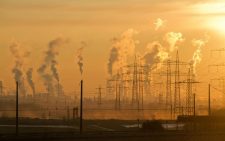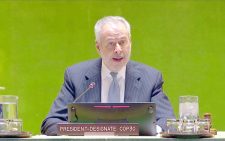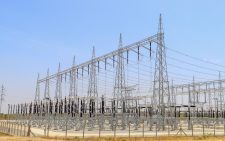Climate change: Countries take the big emitters to global court

Scientists have asserted that the climate crisis debate revolving around global warming, greenhouse gas emissions, sustainable development and geopolitics in the energy transition, will decide the fate of our planet and the well-being of future generations.
The evidence-based warning has seen countries vulnerable to the impacts of global warming and climate change take their legal battle to the International Court of Justice (ICJ) at The Hague.
They accuse wealthy countries that are big emitters of planet-heating gases of using the Paris Agreement and other existing treaties on climate change to avoid additional pressure to step up their action to tackle global warming.
Vulnerable countries and climate activists now want ICJ to determine what legal repercussions the big emitters should face if they don’t own up to their emissions and “significant harm” is caused.
However, the high-emitting rich nations have put up a defence and are shielding behind climate treaties to quash pressure to step up their climate actions.
Experts in the industry describe the critical prevailing situation as the “Energy Trilemma” – the attempt to balance energy security, equity (accessible and affordable), and environmental sustainability.
Since the signing of the Paris Agreement in 2015 and the rapid advance of renewable energy, the quest to reduce emissions has been in the spotlight.
However, energy security is now moving to centre stage due to the shifting geopolitical landscape and escalating tensions in some regions where control over energy is being used as a means to achieve political ends.
Hottest month
Earlier this year, the World Meteorological Organisation announced that July 2023 was the hottest month ever recorded in the past 120,000 years. The announcement prompted United Nations Secretary-General Antonio Guterres to ominously declare that “the era of global warming has ended; the era of global boiling has arrived.”
The role of geoscientists has become significant in environmental geology and climate science in the wake of dynamic interactions that have resulted in or are propelling climate change influenced by global warming.
Scientists say the Holocene is now over and have baptised its replacement Anthropocene, which recognises humans as planetary influencers for the first time in their studies.
The Holocene began after the last ice age 11,700 years ago when the great glaciers that had previously covered the Earth began to retreat. In their wake, modern humans spread relentlessly across the planet.
They mined minerals and gases released by burning fossil fuels and radioactive material produced have begun to make changes to Earth’s geology.
A massive economic and industrialisation expansion across the globe after the Second World War triggered the Anthropocene era.
Human alteration of the land surface, of material and energy flows, and of Earth’s climate has led to the definition of the Anthropocene as a distinct geologic period.
From the Holocene era to the Anthropocene era, we are now transitioning from the global warming era to the global boiling era, as the UN chief puts it.
A substantial and rapid decarbonisation of the global economy is required to limit anthropogenic climate change to well below 2 degrees Celsius (1.5 degrees Celsius in the Paris Agreement) average global heating by 2050.
Energy transition
Yet emissions from fossil fuel energy generation – which dominate global greenhouse gas emissions – are at an all-time high.
Progress and action for an energy transition to net zero carbon is critical. In this threatening doomsday scenario, the role of geoscientists has become crucial in ensuring a fair and sustainable energy transition, and at the pace and scale required.
An energy transition grounded in renewables is important because it delivers benefits that go beyond the climate crisis such as creating new jobs and economic growth, underpinning sustainable development and improving health by reducing pollution.
A successful energy transition reducing net carbon emissions by the middle of the century would ensure significant benefits for the environment, the economy and quality of life for people around the globe, for generations to come.
Cutting carbon emissions by 45 per cent by 2030, and then to net zero by 2050, would keep global warming at no more than 1.5℃ below pre-industrial levels, limiting the impacts of climate change such as rising sea levels, floods, wild fires, drought and higher temperatures from becoming worse than those already taking place.
Cleaner air would reduce diseases caused by pollution, delivering important health benefits, while conservation of natural resources would protect the biodiversity that supports life on the planet as we know it.
According to the International Energy Agency (IEA), 13 million new jobs could be created by 2030, courtesy of the evolution of renewable technologies that will create new “green” jobs that will more than offset those lost to fossil fuel sectors.
After an initial investment, the energy transition can reduce energy bills and industrial costs, freeing up capital for investment in other areas such as sustainable business and development models.
Finally, the energy transition is a one-off opportunity to tackle energy poverty in which people are unable to ensure the adequate heating (or cooling) of their homes or an adequate supply of energy for domestic uses.














